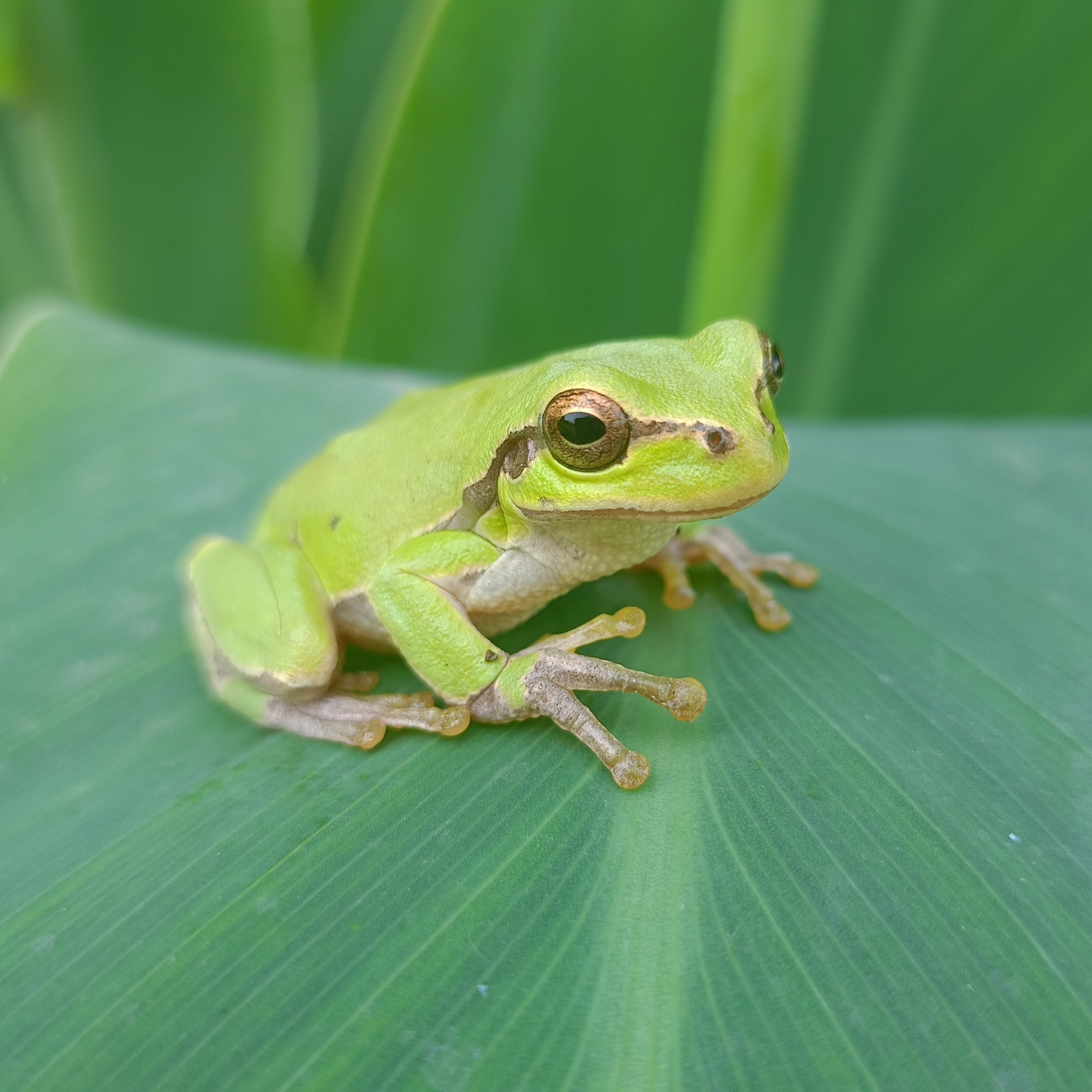It would be easy to assume that little life remains in the area irradiated by the 1986 Chernobyl nuclear disaster. However, against the odds, some species have adapted – including Eastern tree frogs. How did they manage to do this? Researchers think it could come down to rapidly developing a different skin color.
Eastern tree frogs (Hyla orientalis) are normally bright green, but in 2016, a team of researchers working in Chernobyl came across several frogs with black skin. They later returned to examine the population in detail, spending three years examining over 200 male frogs captured from ponds from both within and outside of the Chernobyl Exclusion Zone in northern Ukraine.
The team discovered that those frogs found within the exclusion zone “had a remarkably darker dorsal skin coloration than frogs from outside the Zone.” Why was their skin darker? To protect them from radiation, the researchers suggest.
Frogs with darker skin have more of a group of pigments called melanin; more melanin can result in darker skin and hair, but it can also protect against radiation, including the ionizing kind found in Chernobyl.
“Dark coloration is known to protect against different sources of radiation by neutralizing free radicals and reducing DNA damage, and, particularly melanin pigmentation has been proposed as a buffering mechanism against ionizing radiation,” the researchers write in their 2022 paper.
The skin color of the frogs was at its darkest in the areas closest to the blast and where radiation had been high at the time of the disaster – current radiation levels didn’t seem to have an effect. This, the team suggests, means that “high levels of ionizing radiation, likely at the time of the accident, may have been selected for darker coloration in Chornobyl tree frogs.”

Eastern tree frogs are normally a vivid green.
In other words, it’s rapid evolution in action. At the time, frogs with less melanin would’ve been more vulnerable to the DNA-damaging effects of radiation, likely killing them off at an earlier age – perhaps even before they could reproduce. On the other hand, the frogs with darker skin were more likely to survive and produce many cute frog babies, thanks to their protective melanin; this trait would have been passed on to their offspring.
Female Eastern tree frogs start to breed when they’re around 2 or 3 years old. Nearly 40 years have passed since the Chernobyl disaster, which equals about 10 to 15 generations of frogs at the time of the study. So, when we say this evolutionary process was rapid, we really do mean rapid.
The researchers hope that future studies will help to untangle the genetic mechanisms behind the Chernobyl tree frogs’ darker coloration, as well as establish other possible consequences of wildlife’s long-term exposure to ionizing radiation.
For now, major props to the tree frogs of Chernobyl for surviving – and to all the other creatures that have managed to thrive in the exclusion zone, too.
Source Link: Chernobyl Frogs Have Changed Color, And It Could Be What’s Helped Them Survive